This article needs additional citations for verification .(April 2016) |

Jacek Mierzejewski (1883, Sosnowiec - 1925, Otwock) was a Polish painter, associated with "Formism", a Polish art movement that combined Cubism, Impressionism and Futurism.
This article needs additional citations for verification .(April 2016) |

Jacek Mierzejewski (1883, Sosnowiec - 1925, Otwock) was a Polish painter, associated with "Formism", a Polish art movement that combined Cubism, Impressionism and Futurism.
He began his studies at the Warsaw School of Drawing, then enrolled at the Krakow Academy of Fine Arts, where he studied with Florian Cynk, Leon Wyczółkowski and Józef Mehoffer. In poor health after 1905, he spent much of his free time at the resort in Zakopane. [1]
In 1913, he received a scholarship that enabled him to study in France, where he spent most of his time in Paris and Brittany. The works of Cézanne became a major influence there. His first major exhibition was with the Kraków Society of Friends of Fine Arts in 1916. [1]
During this time, he was diagnosed with tuberculosis. He returned to Poland after the war and settled in Piotrowice near Nałęczów, the site of a well-known sanatorium. He died of his illness in 1925. [1]
In addition to paintings, he produced etchings and lithographs. He also illustrated children's books and textbooks and did satirical cartoons for the short-lived (1911–12) biweekly magazine Abdera. In 1923, he displayed toys and Christmas decorations he had designed, at the Exhibition of the Decorative Arts in Monza. [1]
His sons, Andrzej and Jerzy also became well-known painters.

Jan Alojzy Matejko was a Polish painter, a leading 19th-century exponent of history painting, known for depicting nodal events from Polish history. His works include large scale oil paintings such as Stańczyk (1862), Rejtan (1866), Union of Lublin (1869), Astronomer Copernicus, or Conversations with God (1873), or Battle of Grunwald (1878). He was the author of numerous portraits, a gallery of Polish monarchs in book form, and murals in St. Mary's Basilica, Kraków. He is considered by many as the most celebrated Polish painter, and sometimes as the "national painter" of Poland.

Ryszard Jerzy Gryglewski was a Polish pharmacologist and physician. He is known for co-discovering prostacyclin. He was a Member of the Polish Academy of Learning (PAU) and the Polish Academy of Sciences (PAN). He was the recipient of Sir Hans Krebs Medal as well as Poland's highest order of merit, the Order of the White Eagle.

Maurycy Gottlieb(; 21/28 February 1856 – 17 July 1879) was a Polish-Jewish realist painter of the Romantic period. Considered one of the most talented students of Jan Matejko, Gottllieb died at the age of 23.

Xawery Dunikowski was a Polish sculptor and artist, notable for surviving Auschwitz concentration camp, and best known for his Neo-Romantic sculptures and Auschwitz-inspired art.

Jerzy Oskar Stuhr was a Polish film and theatre actor. Considered one of the most popular, influential and versatile Polish actors and an icon of Polish cinema, he also worked as a screenwriter, film director, voice actor and drama professor. He served as the rector of the Ludwik Solski Academy for the Dramatic Arts in Kraków for two terms: from 1990 to 1996 and again from 2002 to 2008.

Stefan Gierowski was a Polish painter and an avant garde artist of post-war Poland.

Jacek Malczewski was a Polish symbolist painter who was one of the central figures of the patriotic Young Poland movement. His creative output combined the predominant style of his times with historical motifs of Polish martyrdom, the romantic ideals of independence, Christian and Greek mythology, folk tales, as well as his love of the natural world. He was the father of painter Rafał Malczewski.

Władysław Podkowiński was a Polish master painter and illustrator associated with the Young Poland movement during the Partition period.

Andrzej Krystyn Wróblewski was a Polish figurative painter who died in a mountaineering accident in 1957 when he was only 29. He is recognized by many as one of Poland's most prominent artists in the early post World War II era, creating a distinctly individualistic approach to representational art.
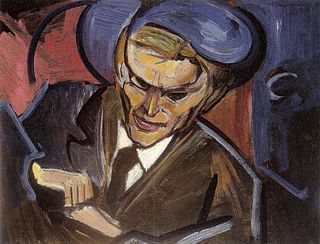
Tytus Czyżewski was a Polish painter, art theoretician, Futurist poet, playwright, member of the Polish Formists and a Colorist.
Wlastimil Hofman was a Polish painter, one of the more popular painters of the interwar and postwar years.

Józef Czapski was a Polish artist, author, and critic, as well as an officer of the Polish Army. As a painter, he is notable for his membership in the Kapist movement, which was heavily influenced by Cézanne. Following the Polish Defensive War, he was made a prisoner of war by the Soviets and was among the very few officers to survive the Katyn massacre of 1940. Following the Sikorski-Mayski Agreement, he was an official envoy of the Polish government searching for the missing Polish officers in Russia. After World War II, he remained in exile in the Paris suburb of Maisons-Laffitte, where he was among the founders of Kultura monthly, one of the most influential Polish cultural journals of the 20th century.

Zofia Stryjeńska was a Polish painter, graphic designer, illustrator, stage designer, and a representative of art deco. Along with Olga Boznańska and Tamara de Lempicka, she was one of the best-known Polish women artists of the interwar period. In the 1930s she was nominated for the prestigious Golden Laurel of the Polish Academy of Literature, but declined the offer.
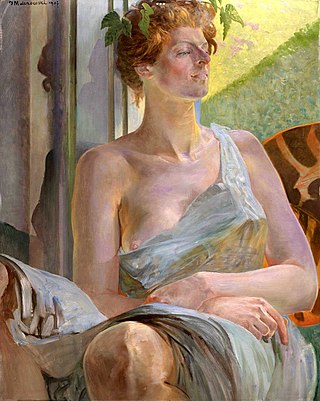
Jadwiga Maria Kinga Bal (Balowa) of Zaleszczyki, née Brunicka was a Polish baroness and a lifelong muse of Jacek Malczewski, considered Poland's national painter. She served as the live model for a series of his symbolic portrayals of women, as well as nude studies and mythological beings. Most were completed before the interwar period when Poland had not yet achieved independence.
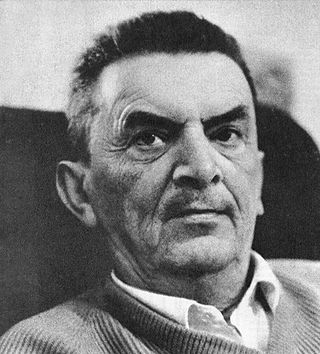
Jan Cybis was a prominent Polish painter and art teacher.
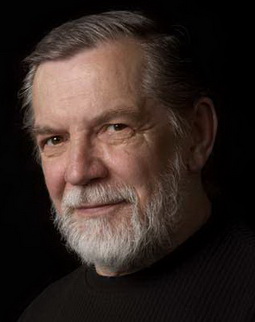
Emil Polit was a Polish painter known for his works on canvas and church murals. He was a portrait artist and painter of religious works which are exhibited in many churches in Poland and held in numerous collections including at the National Museum of Przemyśl, Art Exhibitions Bureau's Exhibition Center in Rzeszów, and at the Vatican.
Jerzy Mierzejewski was a Polish painter, pedagogue and long-term dean of Cinematography and Directing at the Łódź fim school. He was the son of Jacek Mierzejewski, and brother of Andrzej Mierzejewski, both also painters.

Józef Rapacki was a Polish painter, watercolorist and graphic designer; best known for his nostalgic landscapes of Mazovia.

Formizm was a Polish avant-garde literary and art movement active in the years 1917 to 1922. It drew inspirations from Cubism, Expressionism and Futurism as well as Polish folk art. Together with Unism, started by Władysław Strzemiński in the early 1920s, Formizm was one of the two independently Polish avant-garde movements.
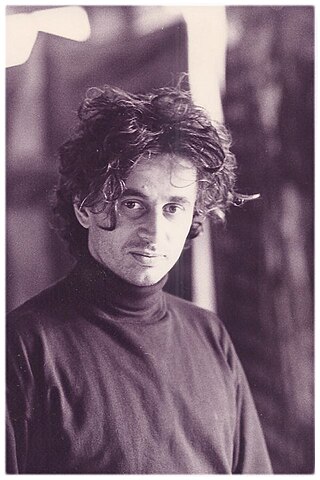
Jerzy Kubina is a painter and installation artist. As a child he studied piano and violin. Instruments would later find their way into his performance work.
![]() Media related to Jacek Mierzejewski at Wikimedia Commons
Media related to Jacek Mierzejewski at Wikimedia Commons